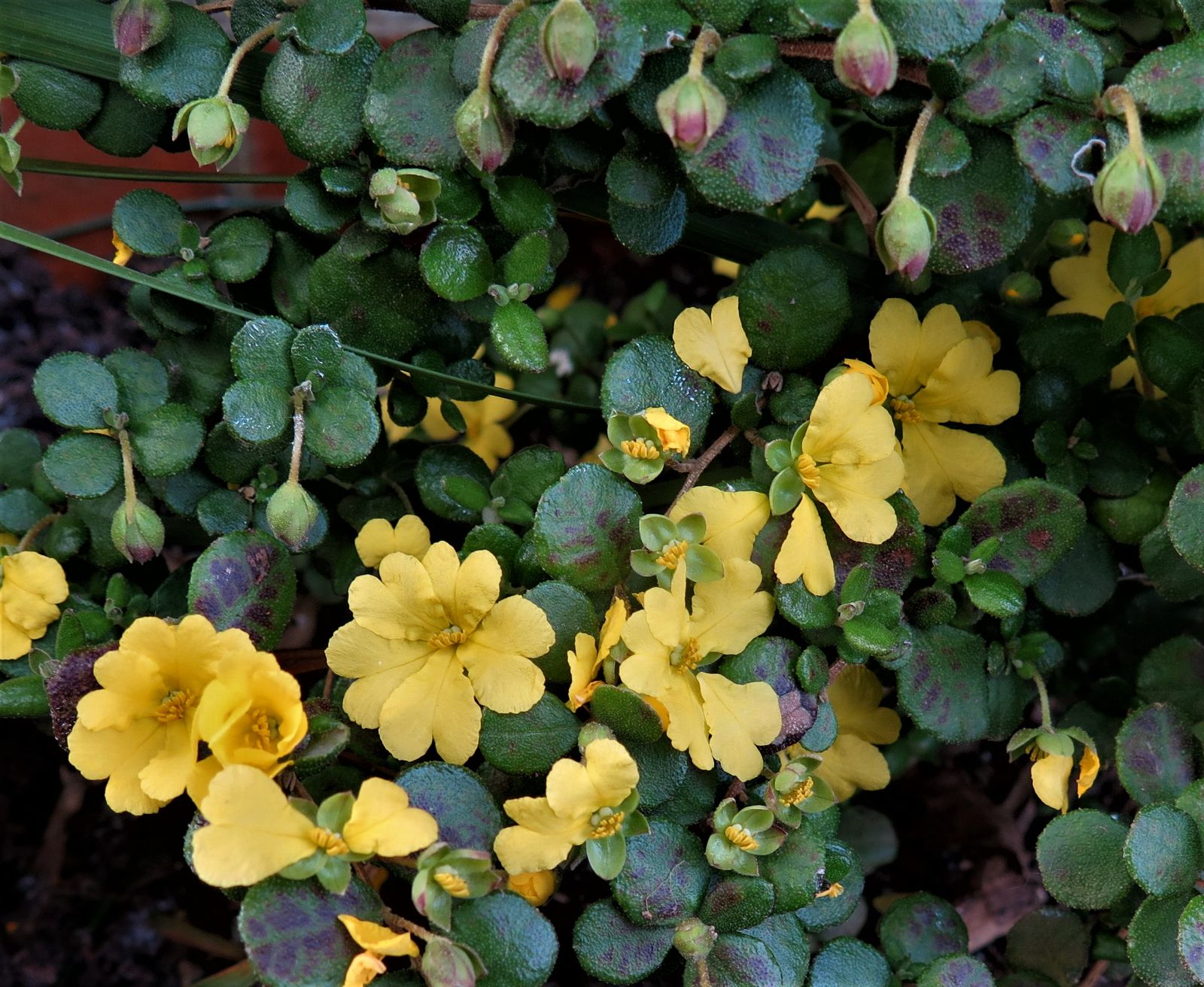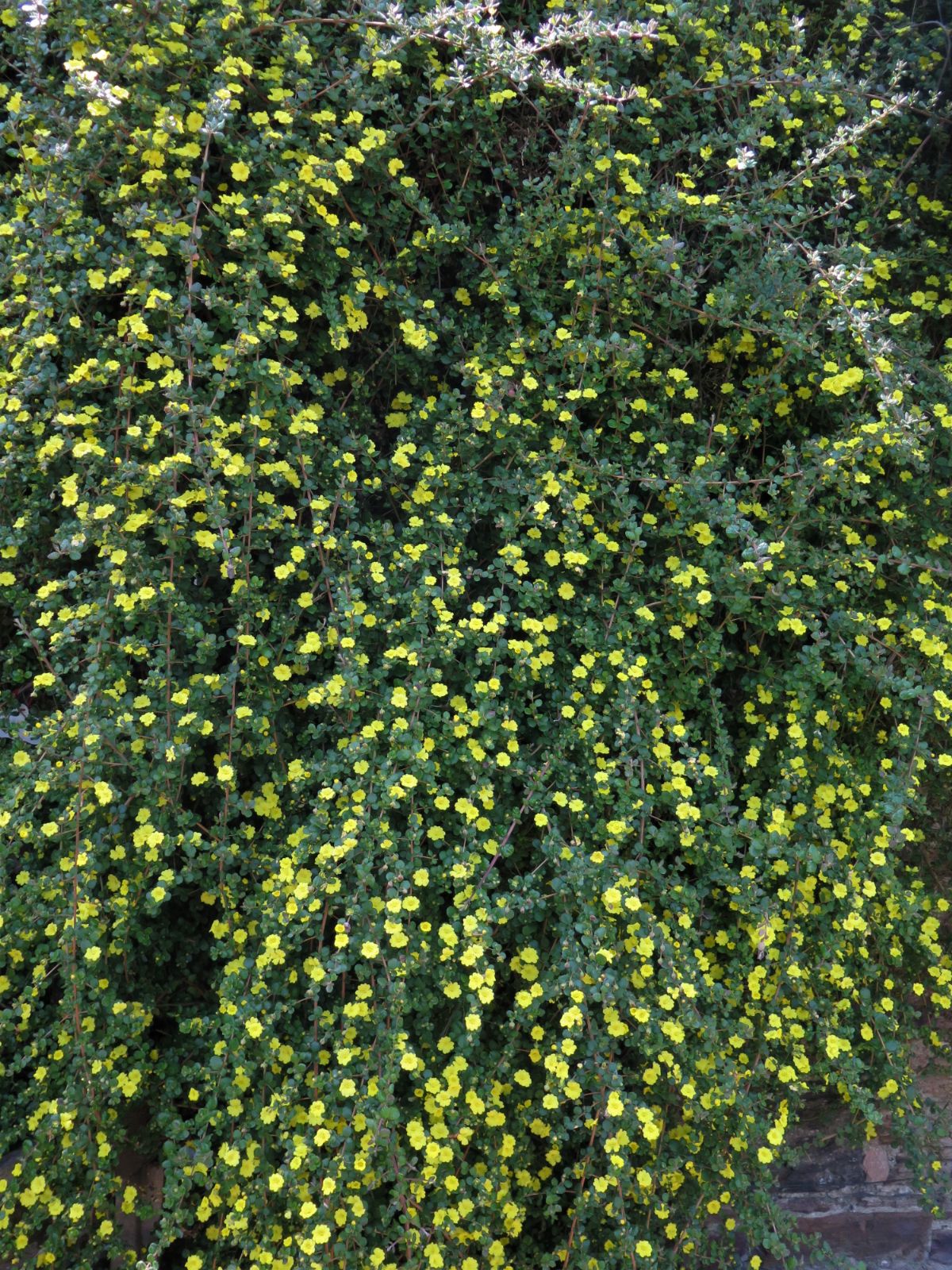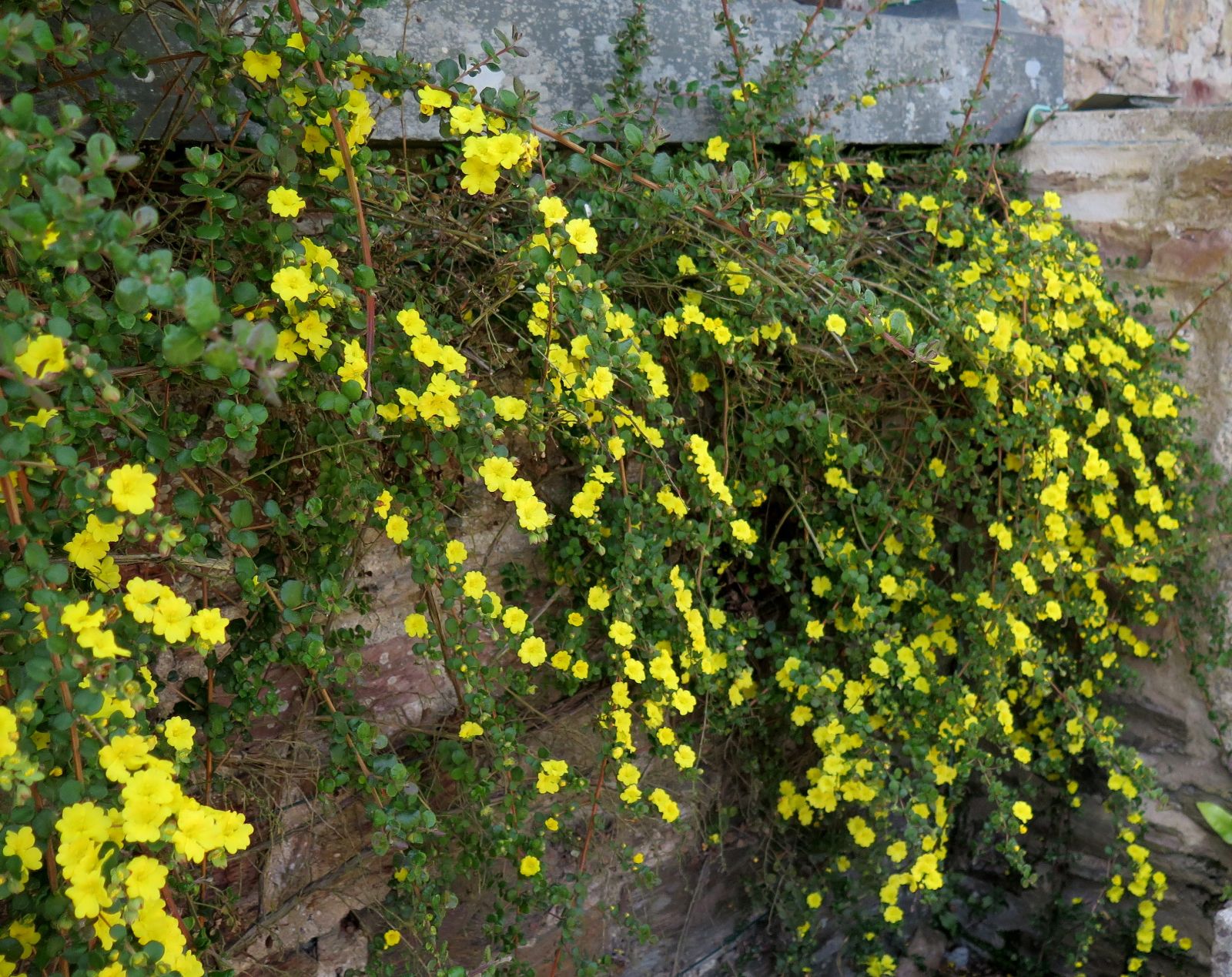Hibbertia aspera
Sponsor
Kindly sponsored by a member of the International Dendrology Society.
Credits
Tom Christian (2018)
Recommended citation
Christian, T. (2018), 'Hibbertia aspera' from the website Trees and Shrubs Online (treesandshrubsonline.
Genus
A small shrub with erect, scrambling or occasionally decumbent, villous to pubescent branches to c. 1 m with stellate 2–5(–15) branched hairs persisting on young stems and the calyx. Leaves oblong to oblanceolate to obovate (3–)5–13(–18) mm long × 2–5.5(–7.5) mm wide, upper surface pubescent or puberulous, becoming more or less glabrous, underside rarely pubescent except when juvenile, margins revolute and central vein slightly raised below. Flowers usually solitary or in clusters of 3, peduncle, bracts and calyx all velutinous to pubescent, petals oblanceolate, 3–5(–6) mm long, yellow, stamens (2–)4–6(–9) in a single cluster, pistils 2, ovary with erect stellate hairs, seeds glossy brown to black (Toelken 1998).
Distribution Australia Southeastern Queensland, eastern New South Wales and Victoria.
Habitat Open forest or heathland in the Mediterranean climatic zone
USDA Hardiness Zone 9a
RHS Hardiness Rating H3
Conservation status Not evaluated (NE)
H. aspera, like many species in the genus, shows morphological variation even on a single plant, but is distinguished from the superficially similar and closely related H. empetrifolia by virtue of the dense or else randomly scattered indumentum on the underside of the leaves (vs. indumentum restricted to the central or occasionally secondary veins in H. empetrifolia). A revision by H. R. Toelken in 1998 described a new subspecies, H. aspera subsp. pilosifolia, placing particular importance on the morphology of leaf hairs, which differ from the type in being assurgent with < 5 branches vs. rarely assurgent hairs with > 5 branches in the type (Toelken 1998).
Despite its reputation as a plant for the mildest parts of southwestern Britain or else the conservatory, H. aspera has survived against a warm wall in John Grimshaw’s North Yorkshire garden for three winters, and although it was cut back hard by the strong, cold winds of March 2018, it was flowering again by June that year (J. Grimshaw pers. comm. 2018). Still, it remains relatively scarce in cultivation in the UK and is most regularly encountered in specialist collections in the south and southwest of England – for example, at Ventnor Botanic Garden on the Isle of Wight (Ventnor Botanic Garden 2017) and at Lamorran House Gardens in Cornwall (Lamorran House Gardens 2018). Seemingly, it may occasionally be encountered in municipal gardens in this area too – there is an unconfirmed report of it growing in the Lower Gardens in Bournemouth (ispotnature.org 2018).
It is offered for sale by several French nurseries and online retailers, and presumably grows in mild gardens along France’s Atlantic coast (although no definitive records of its cultivation here have been found), and of course in the Mediterranean south where the climate is better suited.




